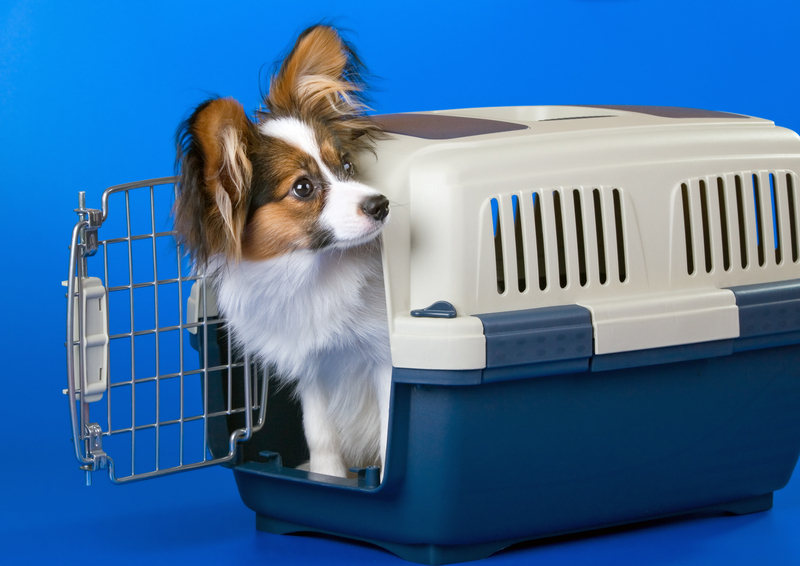Tips for Packing Fragile Items Safely for Your Move
Moving to a new home or office can be both exciting and stressful, especially when it comes to safeguarding your precious and delicate belongings. Fragile items such as glassware, ceramics, artwork, electronics, and antiques require special attention to ensure they don't end up damaged during your transition. This guide shares expert tips for packing fragile items safely for your move so you can have peace of mind and a hassle-free moving experience.
Why Safe Packing of Fragile Items Matters
Packing fragile belongings carelessly increases the risk of breakage, resulting in emotional and financial loss. Proper packing not only protects your valuables but also makes the unpacking process organized and efficient. The following moving safety tips will help you safeguard all your delicate items during transit.

Essential Packing Materials for Fragile Belongings
The first step in packing fragile items for moving is to gather all necessary supplies. Investing in quality materials adds an extra layer of protection for your valuables. Here is a checklist of must-have packing supplies:
- Sturdy moving boxes: Choose different sizes, including specialty boxes for dishes, glasses, and electronics.
- Bubble wrap: Provides cushioning and prevents direct impacts.
- Packing paper: Adds protection without adding much weight or bulk.
- Peanuts or foam inserts: Fill voids in boxes and absorb shock.
- Corrugated cardboard sheets: Separate and pad flat fragile items.
- Tape (high-quality packing tape): Seals boxes securely and reinforces box seams.
- Markers and labels: Clearly mark boxes as "Fragile" and indicate their contents.
- Plastic bags and zip ties: For securing smaller parts and components.
Pro Packing Tips for Fragile Items
Ready to start packing your delicate goods? Below are the top professional tips and step-by-step methods for packing fragile items safely for your move:
1. Sort and Organize Your Fragile Items
Before you start wrapping and boxing, sort your fragile possessions by type: glassware, plates, lamps, figurines, artwork, electronics, etc. This allows you to allocate the right materials and choose appropriately sized boxes for each category. Take the time to donate or discard items you no longer need--less clutter means safer transport.
2. Choose the Right Boxes for Each Item
Using sturdy, appropriately sized boxes is one of the most crucial tips for packing fragile goods for a move. Avoid oversized boxes that can cause items to shift, as well as boxes that are too small to offer adequate cushioning. Specialized boxes, such as dish-pack boxes with dividers or TV boxes for flat screens, are excellent investments for extra delicate items.
3. Double-Check the Box's Strength
Inspect every box for weakened seams or damp spots. Reinforce box bottoms with extra tape for added security--especially when loading valuable breakables. If needed, use double-walled boxes or reinforce regular boxes with cardboard inserts for extra strength.
4. Pad the Base of Every Box
Line the bottom of every box with crumpled packing paper, bubble wrap, or packing peanuts. This foundation acts as a shock absorber and minimizes the impact from bumps during loading and transit.
5. Wrap Each Object Individually
Take the time to wrap each fragile item separately. Use bubble wrap or packing paper, covering all surfaces. Pay special attention to corners and protruding elements that are more susceptible to breaking. For added security, double wrap highly fragile or valuable items such as crystal, porcelain, or heirlooms.
6. Stuff Hollow Items
Fill hollow items--like vases, glasses, and jars--with packing paper or small bubble wrap pieces. This strengthens the structure and reduces the risk of collapse.
7. Use Dividers for Stemware and Glasses
If possible, use boxes with built-in dividers specifically designed for glasses and stemware. Alternatively, create your own partitions using pieces of cardboard to prevent items from knocking into each other during the move.
8. Layer Delicate Items Carefully
When boxing up fragile items, create layers:
- Place heavier items at the bottom, lighter ones on top.
- Separate layers with foam sheets, cardboard, or extra packing paper.
- Ensure each layer is stable before adding the next.
9. Avoid Overpacking and Underpacking
Overfilled boxes may burst open, while under-packed boxes can collapse. Both scenarios put your breakables at risk. Aim for a snug but not cramped fit, filling empty spaces with extra cushioning.
10. Clearly Label Each Box as "Fragile"
Label all sides of each box with "Fragile" and a brief description of the contents. This alerts movers (or yourself, if doing a DIY move) to handle the boxes carefully and prioritize their safe placement in the moving vehicle.
11. Avoid Stacking Heavy Items on Fragile Boxes
Never place heavy or bulky items on top of boxes containing breakables. During loading, keep delicate items on top of the stack to prevent crushing and breakage.
12. Take Photos for High-Value Fragile Items
Consider photographing valuable contents before boxing them up. These pictures can be useful for insurance claims if your items are lost or damaged, and also helpful for remembering how to repack them in the future.
Room-by-Room Packing Fragile Items: Specific Tips
Each room has its own set of delicate objects. Here are some specific strategies for packing fragile items in different parts of your home:
Kitchen: Dishes, Glassware, and Ceramics
- Wrap plates vertically (like records) with paper/bubble wrap and separate with cardboard.
- Use divided boxes for glasses, mugs, and stemware.
- Pad the bottom and top of each box with plenty of cushioning.
- Place lids on teapots and casseroles upside-down with extra padding between them.
Living Room: Electronics and Artwork
- Pack TVs, computers, and monitors in their original boxes if possible. Otherwise, use textured foam and anti-static wrap.
- Wrap artwork in glassine or plastic wrap before adding a layer of bubble wrap. Place corner protectors on frames.
- Use crate-style boxes or reinforced cardboard for paintings and mirrors.
- Label electronics with their cords/accessories in separate, labeled bags.
Bedrooms: Lamps, Decor, and Collectibles
- Remove lamp shades and bulbs; pack separately with extra padding.
- Disassemble fragile collectibles, if possible, and wrap each piece individually.
- Store jewelry in hard cases or padded pouches to avoid tangling and scratching.
Bathroom: Perfume Bottles and Cosmetics
- Tape lids of toiletry bottles to prevent leaks, wrap fragile bottles in bubble wrap, and pack upright.
- Use small boxes filled with padding for glass cosmetics or mirrors.
Common Packing Mistakes to Avoid with Fragile Items
To further minimize risks, steer clear of these frequent errors:
- Skipping the padding: Not adding enough cushioning leads to chips and cracks.
- Packing fragile items loose: This increases the chance of movement and collision during transit.
- Neglecting to label: Mislabeled boxes might end up under heavy items or get mishandled.
- Using poor-quality materials: Flimsy boxes or old paper can disintegrate during the move.
- Waiting until the last minute: Rushed packing often overlooks crucial reinforcement steps.
Special Packing Tips for Unusual or Large Fragile Items
- Musical Instruments: Use hard cases or double-wrapped padding and never store at the bottom of the pile.
- Large Mirrors: Place masking tape in an "X" across the surface, wrap in bubble wrap, and secure inside a mirror box.
- Chandeliers: Take apart as much as possible, wrap each piece individually, and pack in a custom crate if needed.
- Antiques or Artwork: Seek professional packing services for irreplaceable valuables with sentimental or high financial value.
Extra Tips for DIY Moves
- Plan your packing schedule to allow ample time for careful wrapping and boxing.
- Enlist help for heavy or awkwardly shaped fragile items to avoid dropping or damaging them.
- Inspect boxes upon arrival and unpack fragile boxes first to check for any damage.
What to Do if a Fragile Item Breaks During Your Move
Despite all precautions, accidents can happen. If you discover any breakages, take the following steps:
- Document the damage with clear photos.
- Notify your moving company (if you used one) and file a claim as soon as possible.
- Check your insurance policy for coverage details on fragile items.
- Keep broken pieces for claim verification.

Benefits of Hiring Professional Movers for Fragile Items
If you're worried about handling extremely delicate, valuable, or sentimental objects, professional moving companies offer specialized packing and crating services for fragile items. Benefits include:
- Expertise and experience in packing fragile goods flawlessly.
- Access to quality packing materials and custom crates.
- Insurance coverage for peace of mind.
- Reduced risk of damage or loss during transit.
While there is a cost involved, the investment is worth it to prevent priceless losses and headaches.
Summary: Pack Fragile Items for Moving Like a Pro
Packing fragile items safely for your move doesn't have to be an overwhelming task. With proper planning, quality supplies, and the right techniques, you can protect your most delicate belongings and celebrate a stress-free move. Remember to take your time, remain organized, and prioritize the safety of fragile goods every step of the way.
- Sort, organize, and declutter fragile possessions.
- Use top-quality packing materials for optimal protection.
- Wrap every item individually and reinforce boxes adequately.
- Label, stack, and transport boxes with care.
- Consider professional help for high-value or complex items.
By sticking to these moving tips for packing fragile goods, you'll ensure your favorite possessions arrive at your new space safe, sound, and ready to be enjoyed. Happy moving!



